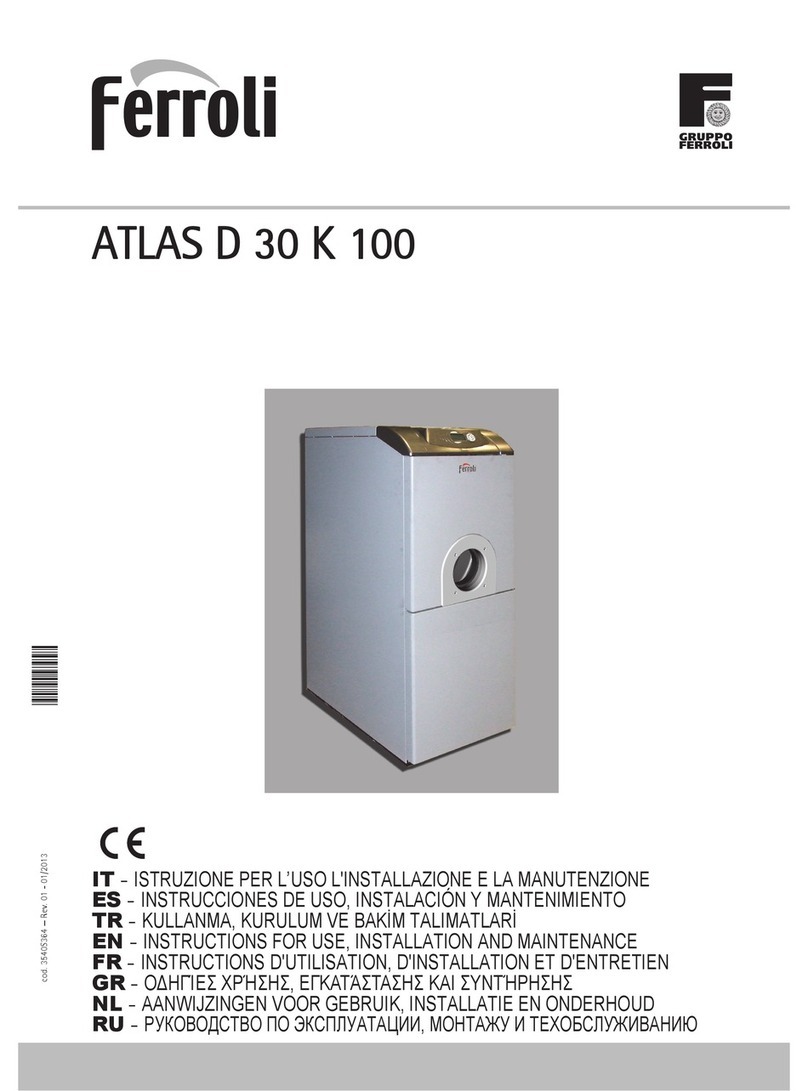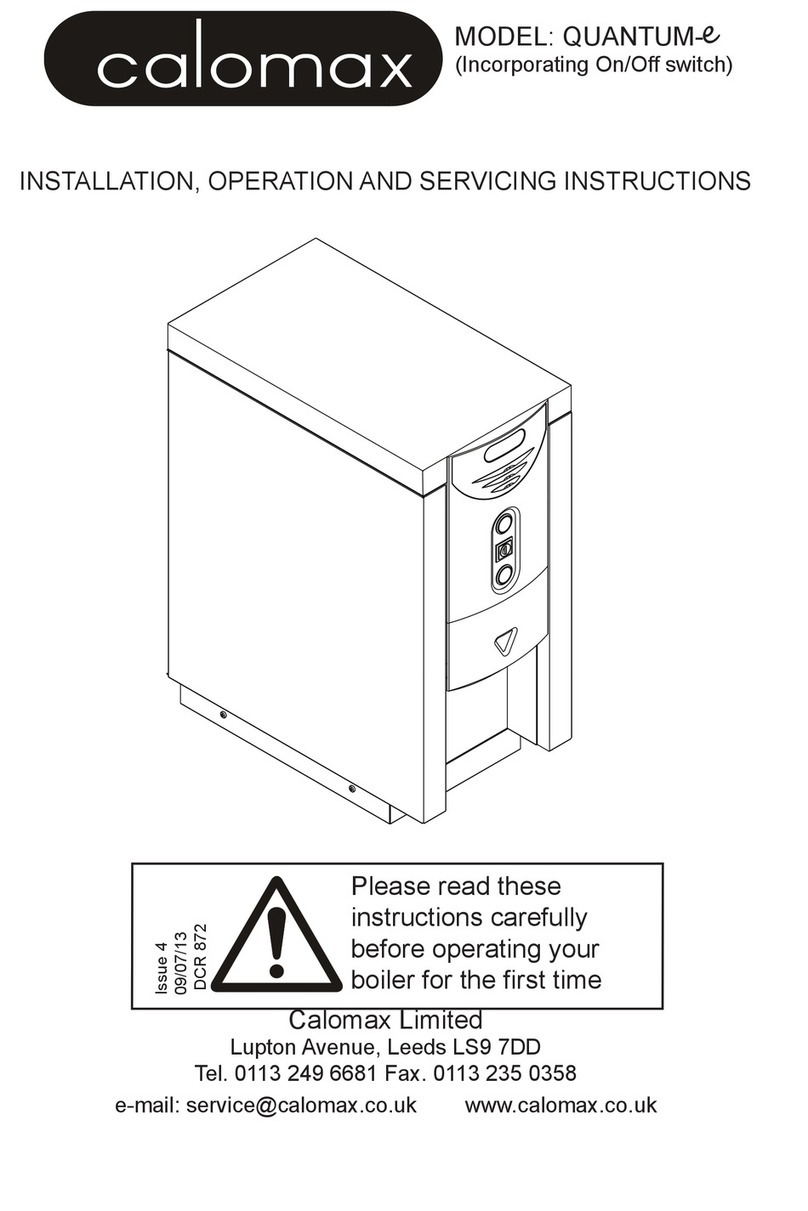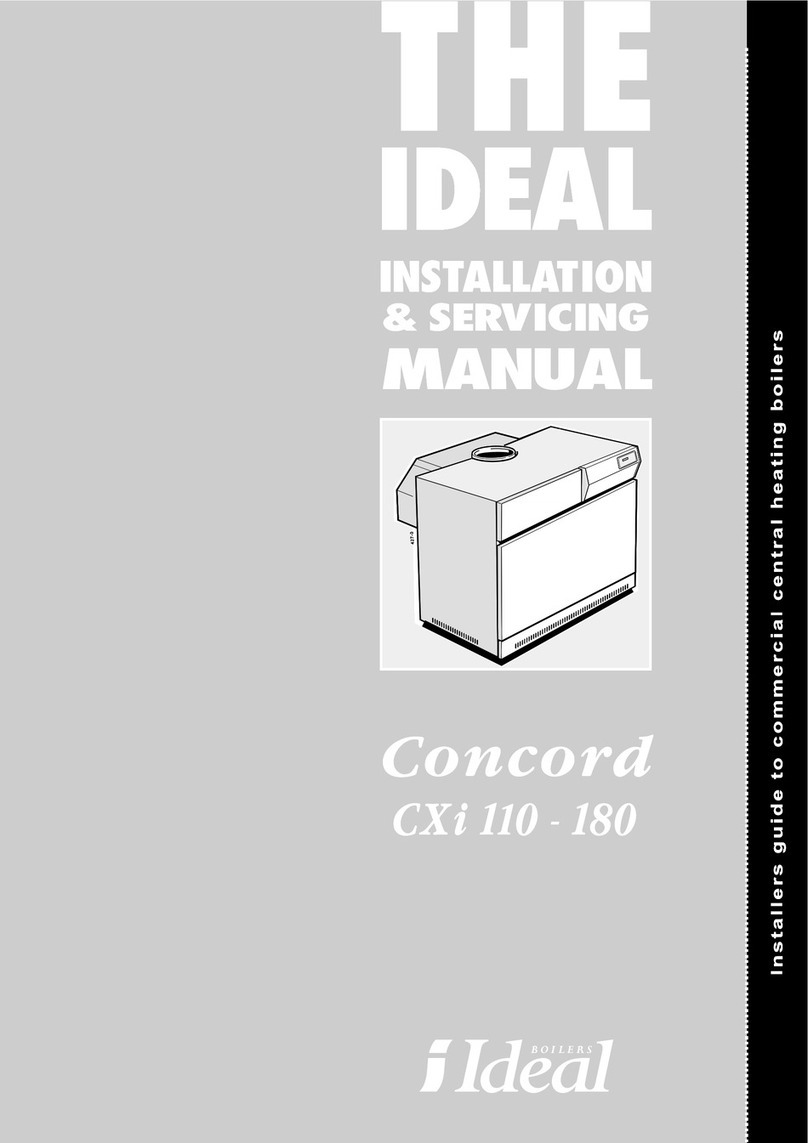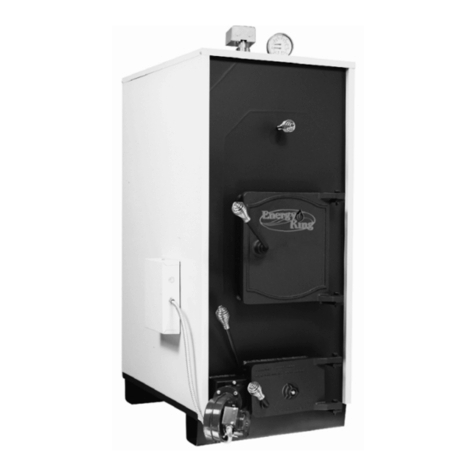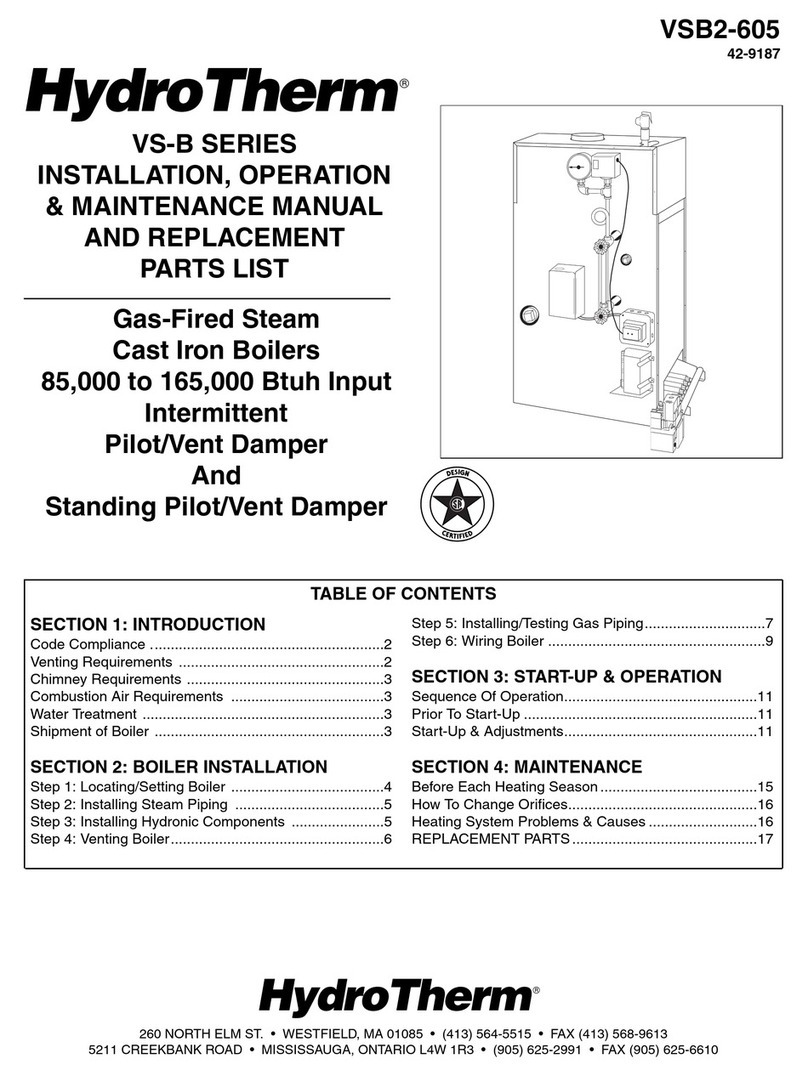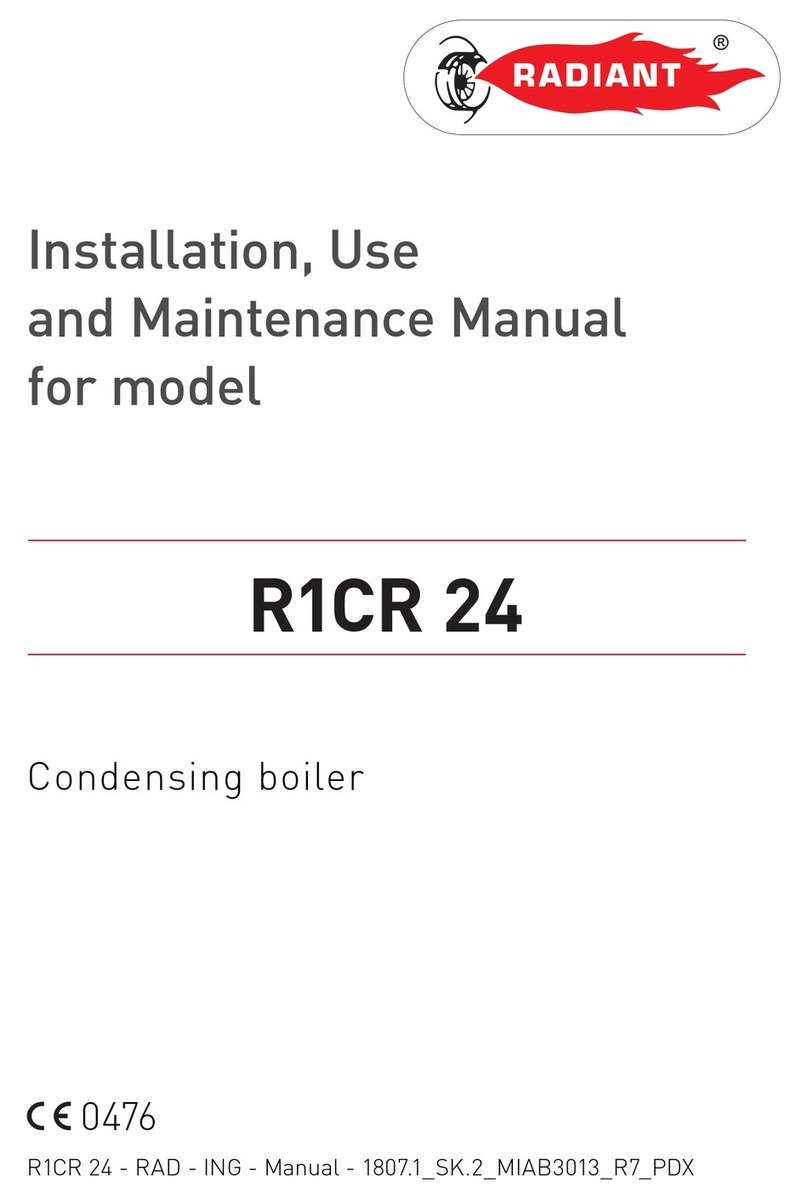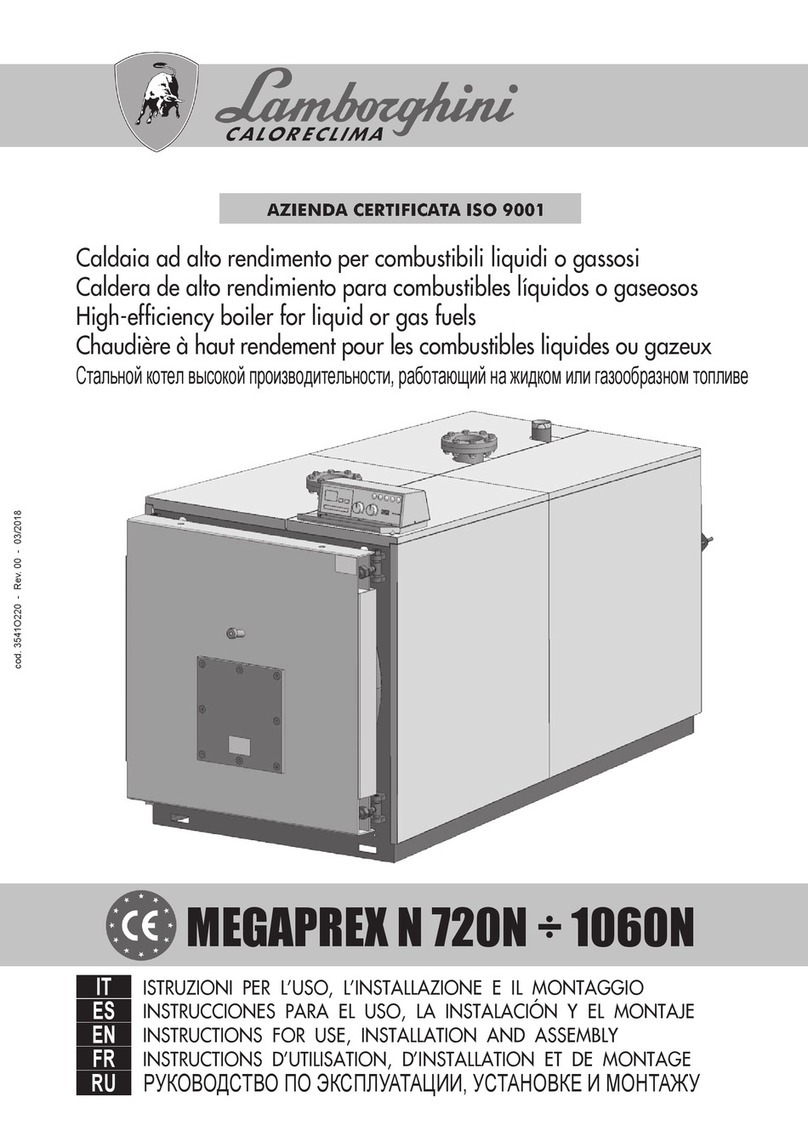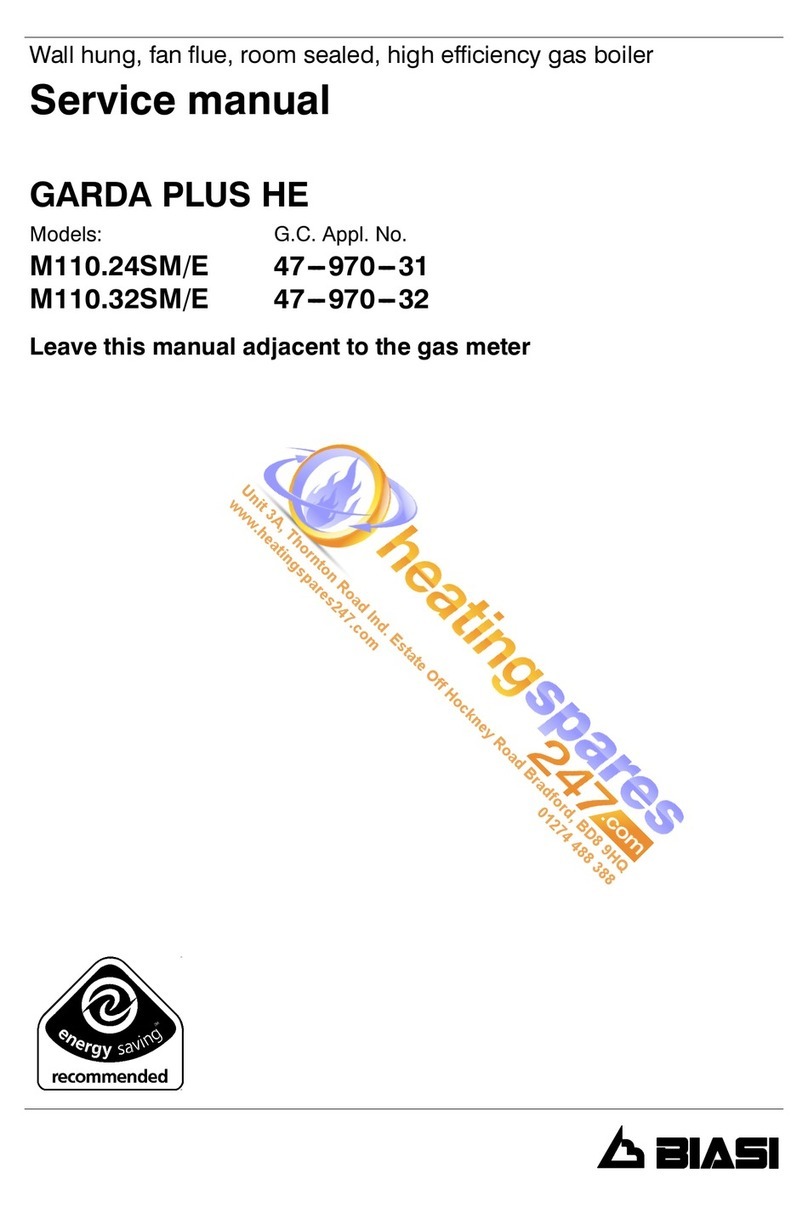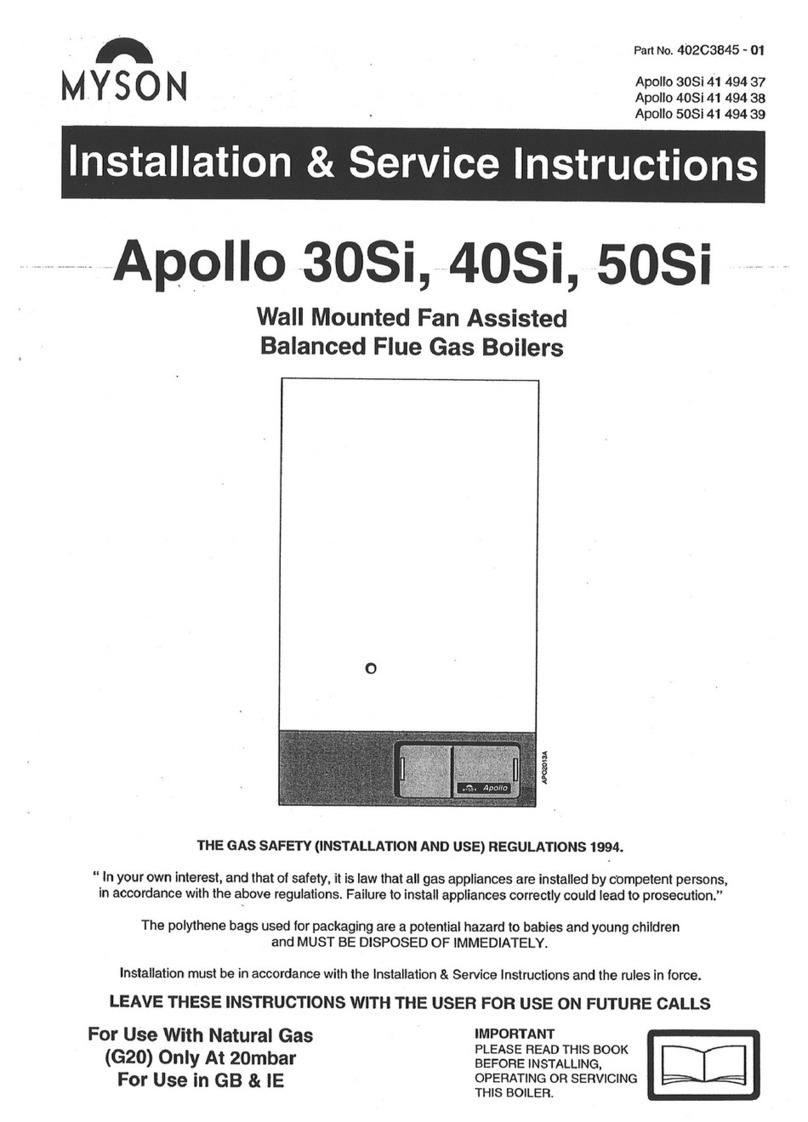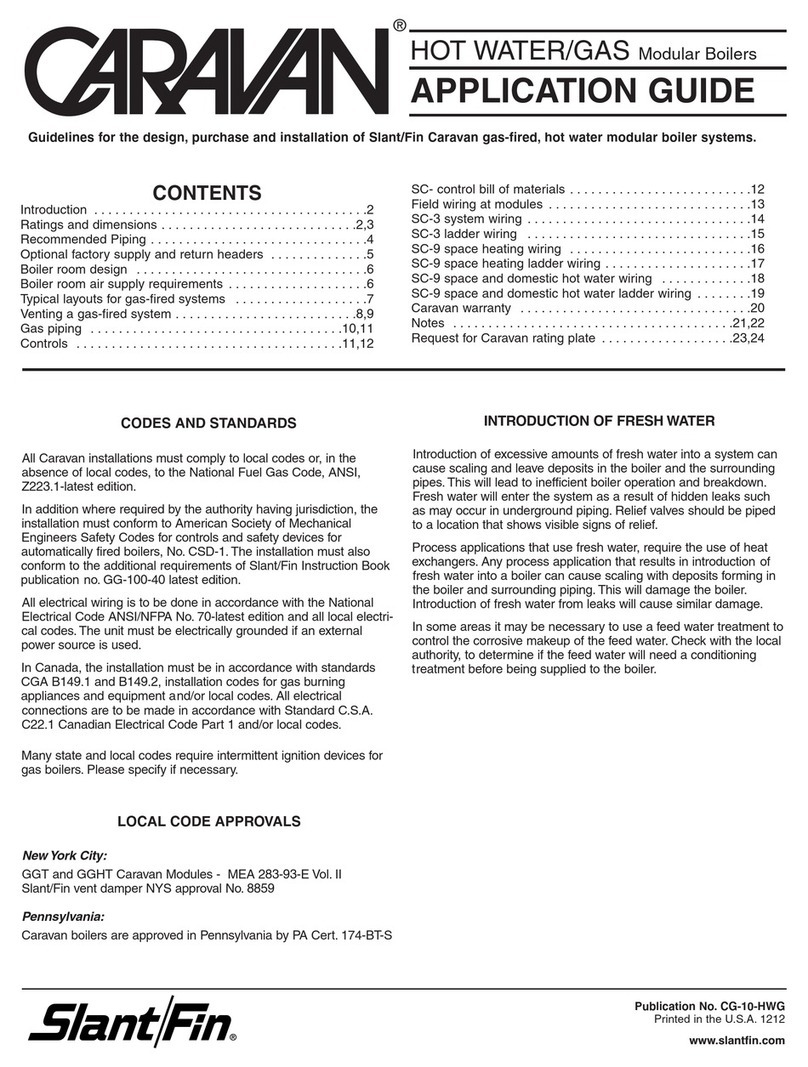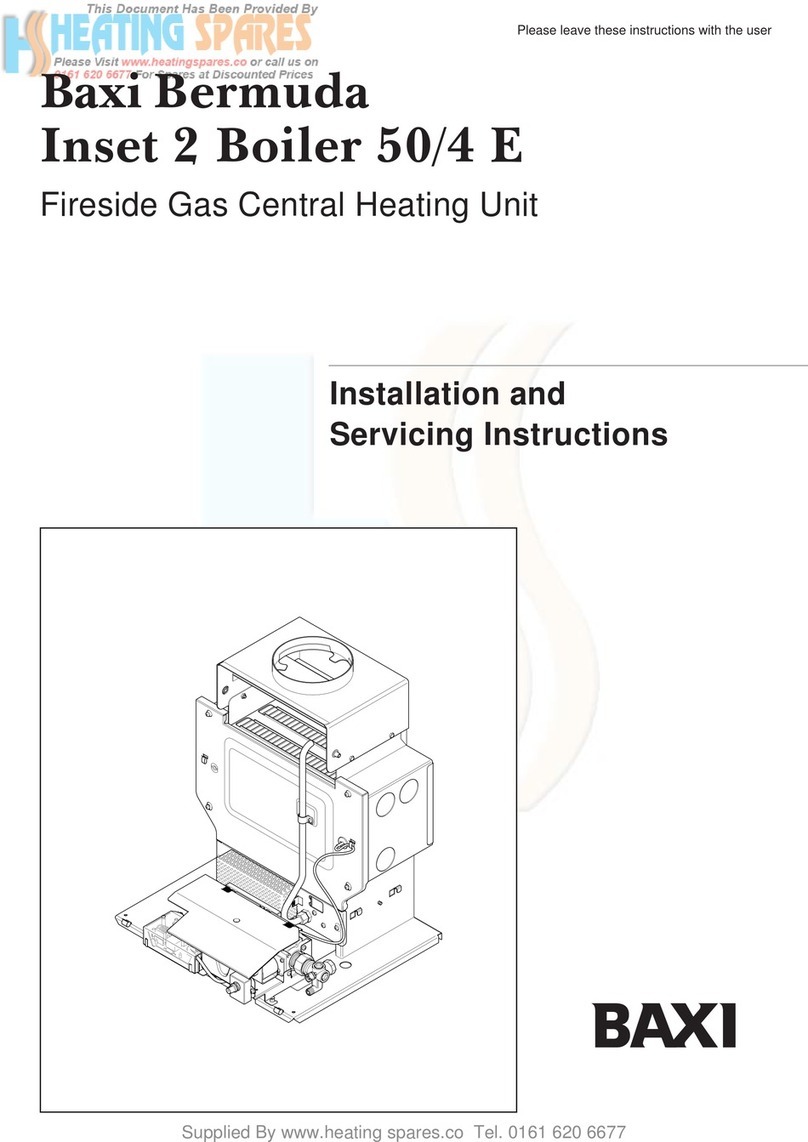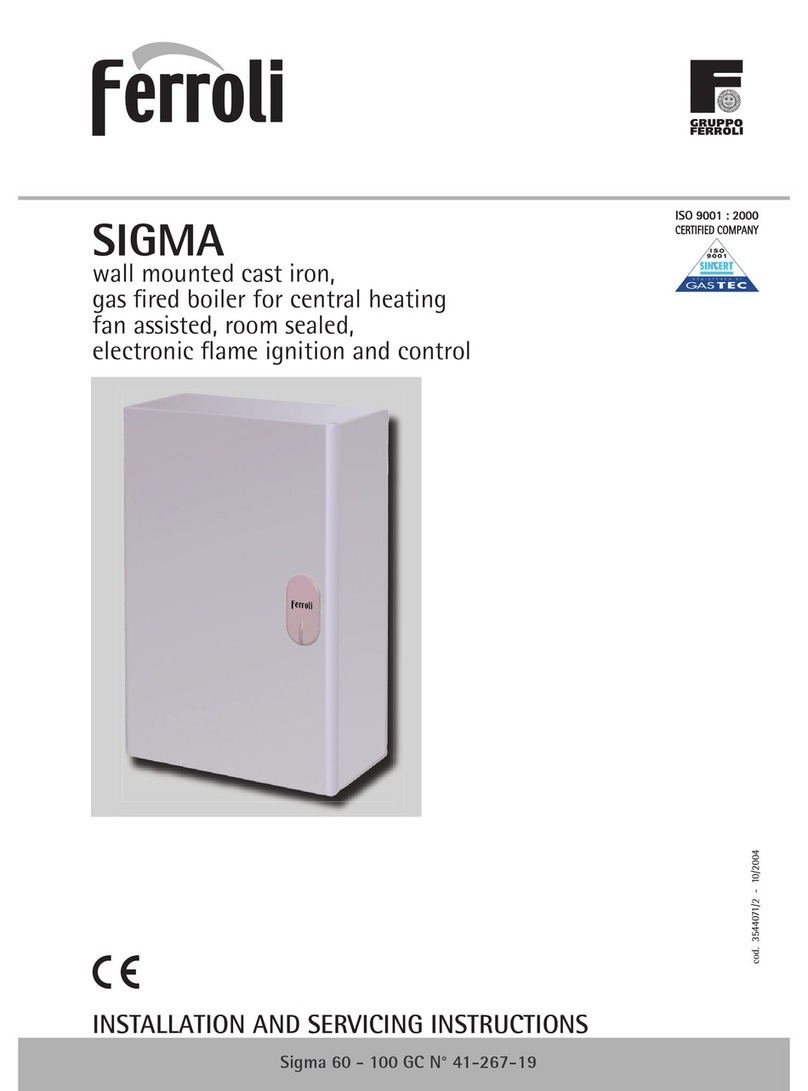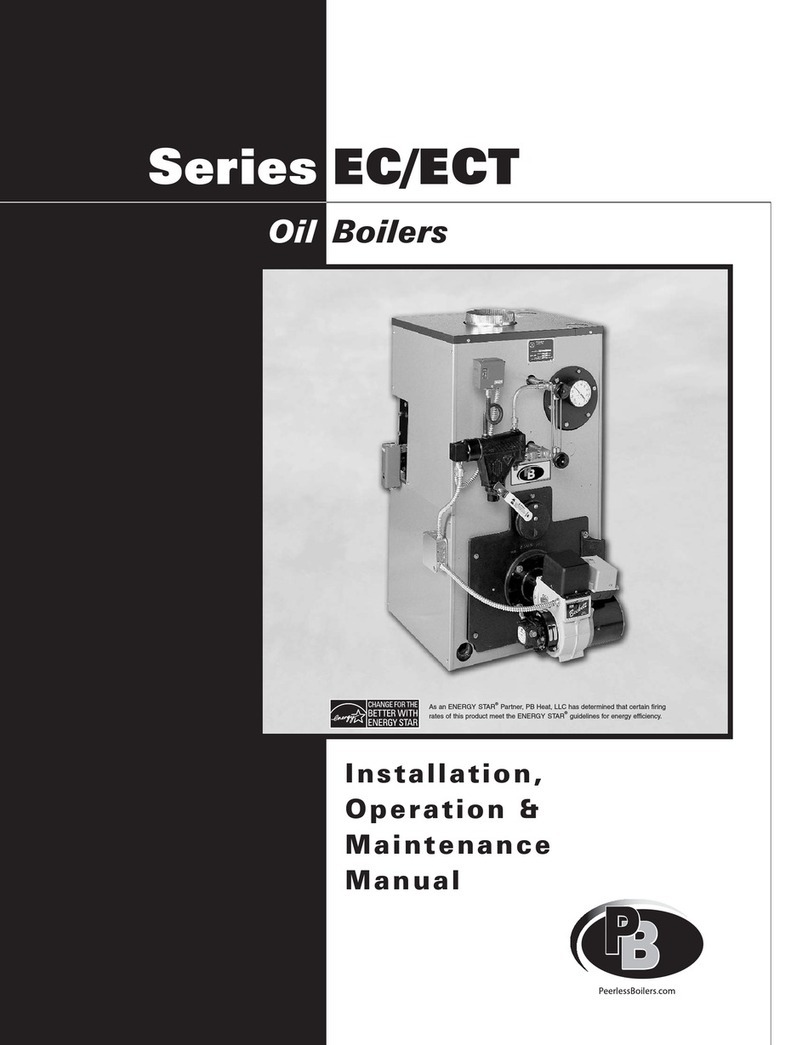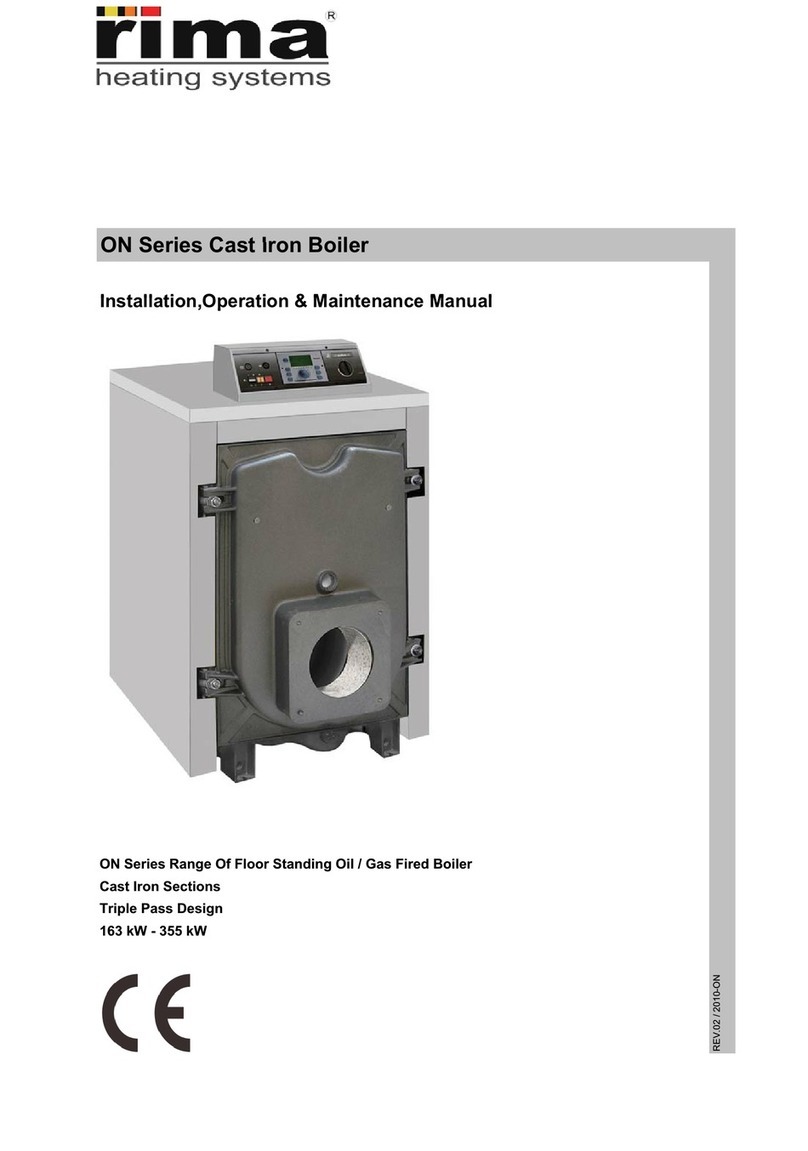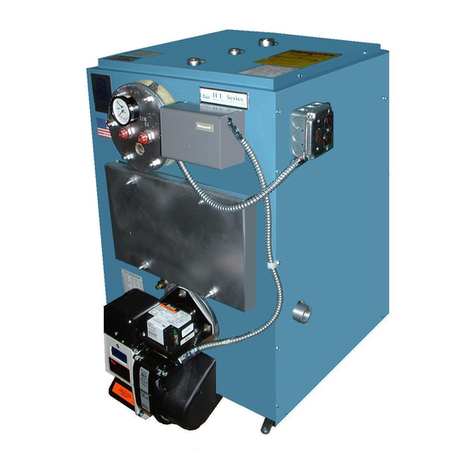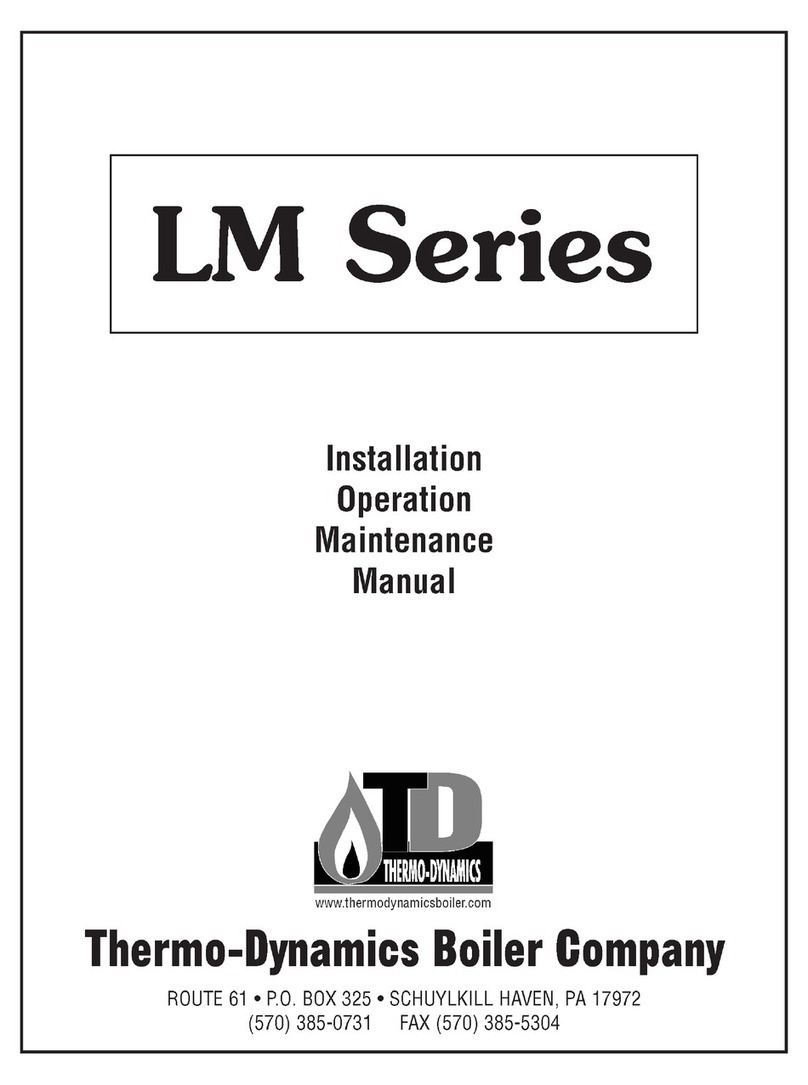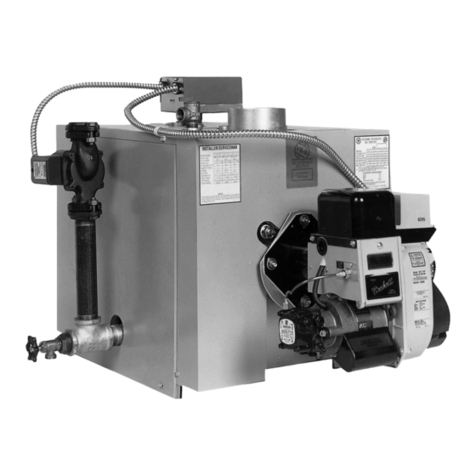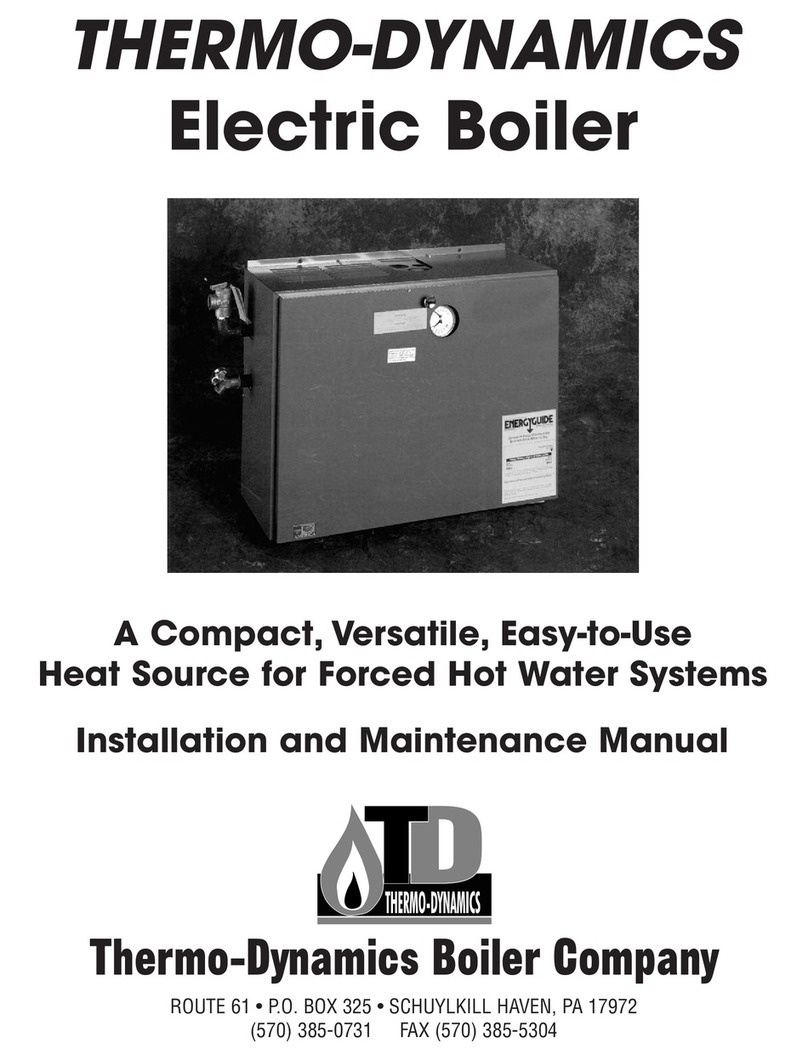
5
valve (tempering valve), not supplied, must be used to reduce the water temperature at
kitchen or bathroom taps. High temperature water for a dishwasher may be obtained by
piping as shown in the Installation Drawing. The nuts that secure the tank-less coil flange
should be tightened before the boiler is filled with water, after initial firing and once a year
during the annual maintenance.
CAUTION: Deterioration due to coil gasket leaks will void the warranty.
6) Connect boiler flue outlet to chimney using galvanized smoke pipe. Use only high quality
lock seam smoke pipe. The flue pipe should be pitched upward at least 1/4" per foot of run.
Refer to the boiler specifications for proper size flue pipe for your model boiler. Use only
elbows and straight sections. Tees may be used in a straight section in conjunction with a
barometric draft regulator however they must not be used for a 90° turn. Each joint should
be securely fastened with sheet metal screws. The flue pipe must not be inserted beyond
the inside wall of the chimney. Install barometric draft regulator in the horizontal or vertical
section of the flue pipe. The draft regulator should be installed in accordance with the
manufacturer’s instructions. Set the draft to in the stack as specified in the boiler specifica-
tions and on the Installer/Serviceman Label on the boiler jacket. The flue gas exit of the
venting system should be at designed with clearances in accordance with N PA 31. A
chimney must be at least 3 feet above the highest point where it passes through the roof
and at least 2 feet higher than any portion of a building within 10 feet of the venting system.
The horizontal length of a chimney connector should not exceed 10 feet unless a draft
booster is used. Where the possibility of down drafts exist, install a listed vent cap.
WARNING: Installation and venting with improper materials or methods may result in
serious injury or death due to asphyxiation from poisonous gases such as carbon
monoxide. A carbon monoxide detector should be installed per the manufacturer’s
instructions.
7) The boiler room must be well ventilated to allow sufficient make-up air to support combus-
tion. Lack of adequate combustion air may result in erratic operation of the burner, noisy
combustion or fuel odors. Remember your need for outside air will be greatly increased if
you have a vented dryer in the basement or other venting fans in the home. Boilers located
in confined spaces shall be provided with two permanent openings, one near the top and
one near the bottom of the enclosure. Each opening shall have a free area of not less than
one square inch per 1000 BTU per hour input rating of the boiler, freely communicating with
interior areas having adequate infiltration from the outside.
8) ill boiler and system with water. Be sure entire system has been purged of air and the
desired pressure is obtained. Leak-check the boiler and piping system by turning off the
make-up water supply and observing the boiler pressure gage. A loss of pressure indicates
a system leak that must be repaired prior to operating the boiler.
9) Remove the nozzle line assembly and check that the correct nozzle is installed for the
desired firing rate. Check that burner settings are correct for the nozzle that is installed.
See the Installer/Serviceman Label.
10) Connect burner to oil supply. Refer to fuel unit manufacturer literature for piping, connec-
tions, lift and tank installation. If such information is unavailable use the following guide
lines.




















